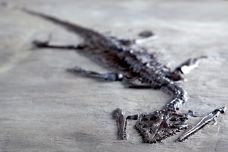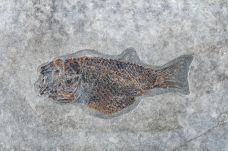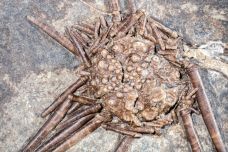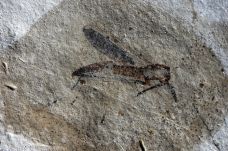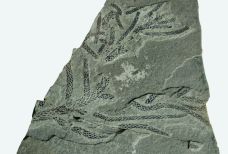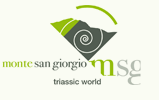The Fossils
Reptiles
Most spectacular of the fossils found at Monte San Giorgio are the reptiles represented by approximately 25 species of mostly marine taxa. These show different degrees of adaptation to aquatic life.
» More ...
Fishes
In addition to the famous reptiles, the deposits of Monte San Giorgio are especially rich in fish with approximately 50 species described so far. Many species are documented in different stages of growth and sometimes it is even possible to determine whether they were male or female.
» More ...
Conodonts
The conodonts are a mysterious group of organisms that became extinct at the end of the Triassic. Only their tiny mouth elements, teeth-like fossils measuring from 0.1 to 4 mm, were known until the discovery of the first complete skeleton in 1983.
» More ...
Molluscs and other marine invertebrates
In addition to the well-known reptiles and fishes, the fossiliferous deposits of Monte San Giorgio have also provided many species of marine invertebrates. These have been used to better understand the environmental conditions through this time interval and to more precisely date the vertebrate levels.
» More ...
Radiolarians
Recent studies by the Museo cantonale di storia naturale, Lugano, have focused on even the tiniest organisms that formed marine plankton, especially radiolarians (unicellular protozoans with siliceous shells a few tenths of a millimetre long), because they are excellent index fossils that can be used for precisely dating the age of the rocks.
» More ...
Insects
In 1998, researchers at the University of Milan discovered the first fossil insect belonging to the group of Ephemeroptera: Tintorina, commonly known as the “mosquito” of Monte San Giorgio. The discovery of Tintorina is very important because it is the first finding of insects at MSG, and shows it was already highly diversified by the Middle Triassic.
» More ...
Terrestrial plants
The marine deposits of Monte San Giorgio also revealed fragments of terrestrial plants (small branches, leaves, cones), which suggest the presence of nearby mainland or islands.
» More ...


